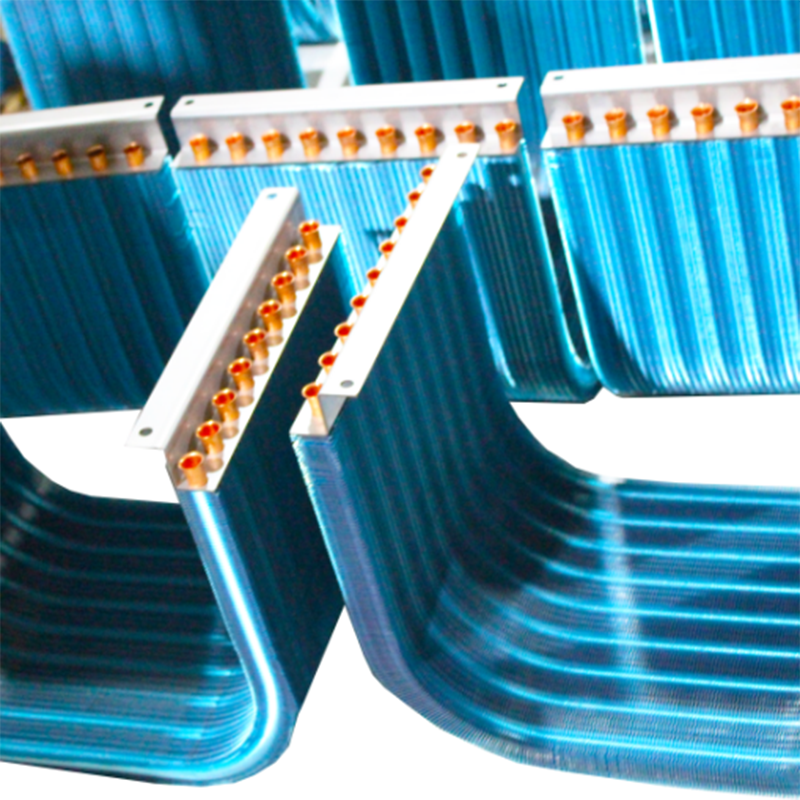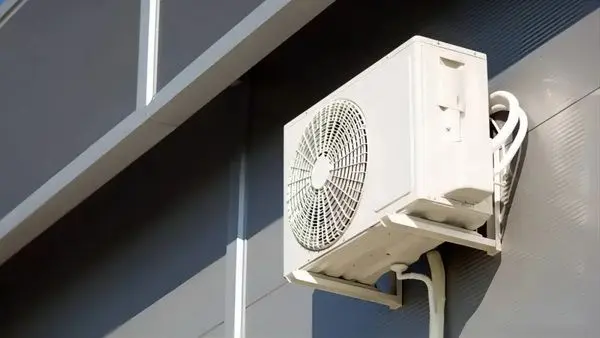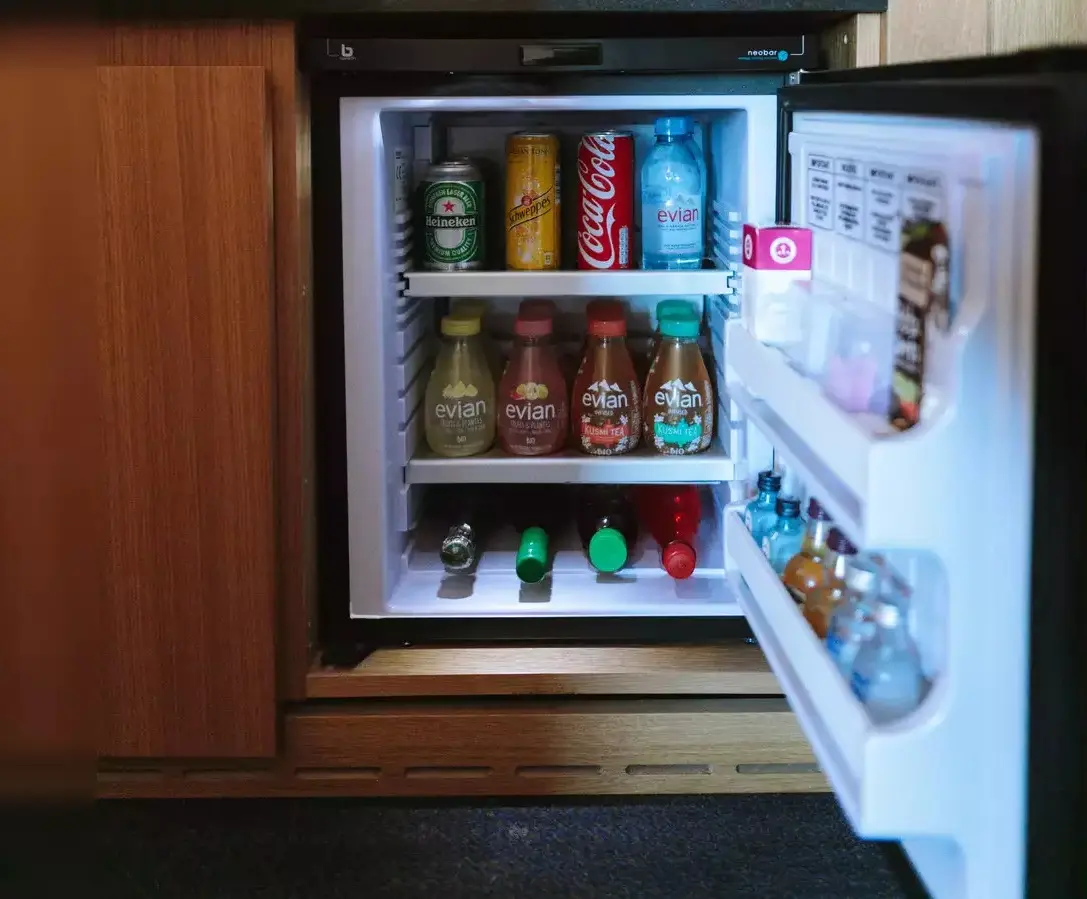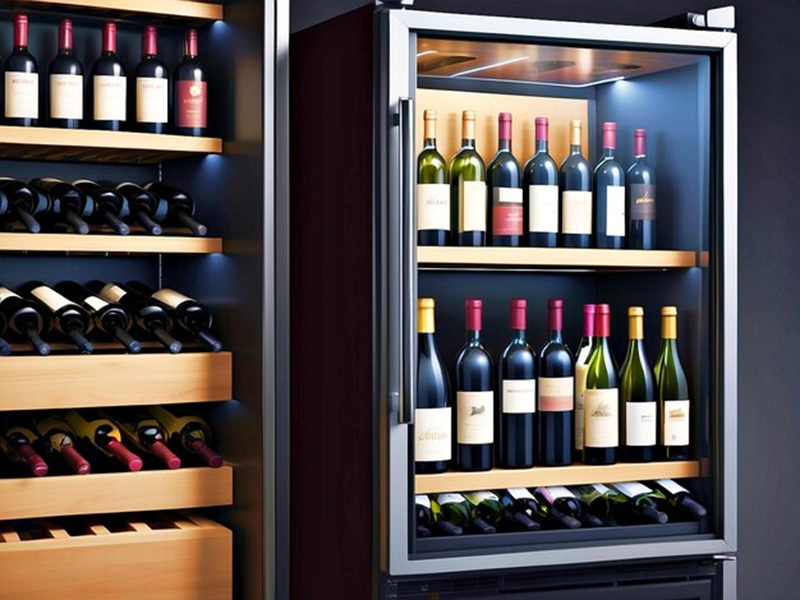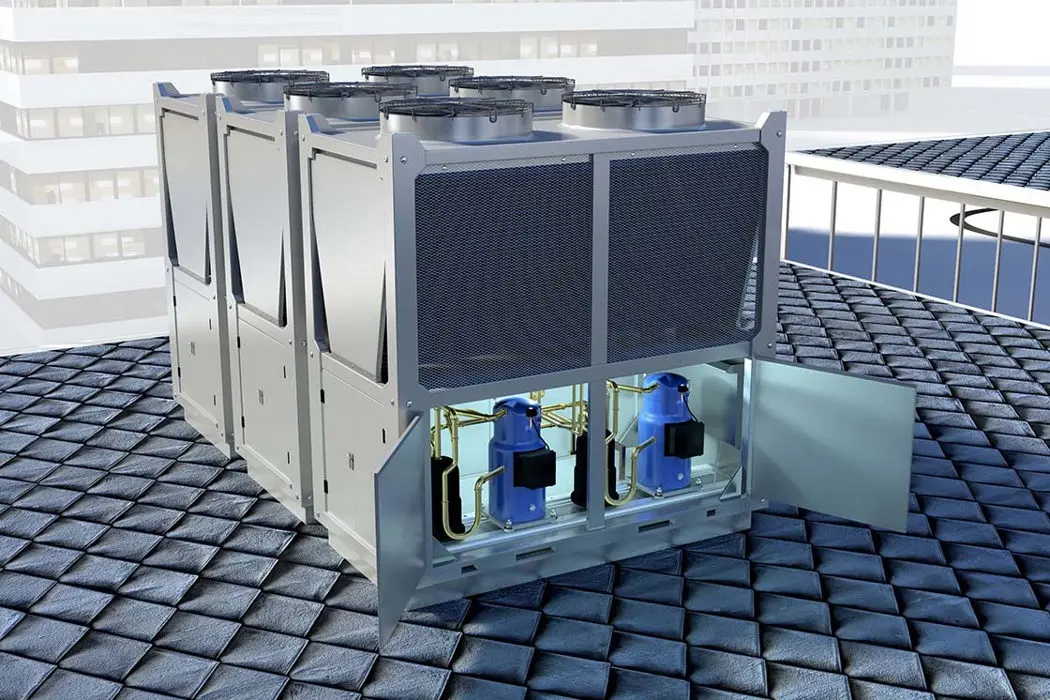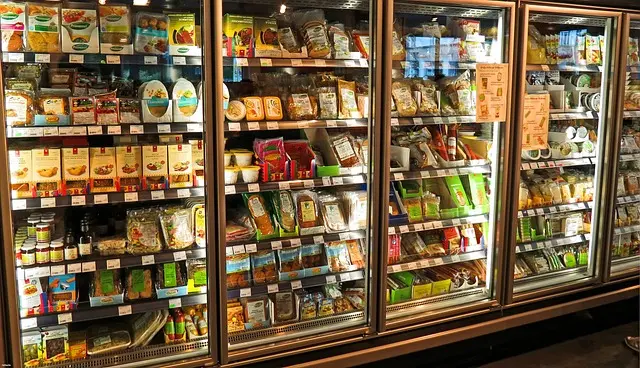China vs. Germany: Divergent Strategies in Heat Exchanger Manufacturing

I have always found Heat Exchangers fascinating due to their critical role in industrial systems. These devices transfer heat efficiently, ensuring optimal performance in applications like refrigeration, energy systems, and more. Germany’s focus on precision engineering and innovation contrasts sharply with China’s emphasis on cost-efficiency and scalability. Companies in China, for instance, excel at producing components like theCopper Fin Heat Exchanger, which is indispensable in modern Cooling Systems.
Key Takeaways
- Germany is great at making precise and advanced machines. Their heat exchangers are perfect for high-end buyers who want dependable products.
- China works on keeping costs low and making lots of products. This helps Chinese heat exchangers fit the needs of buyers who want cheaper options.
- Businesses like Ningbo Senjun New Materials Co., Ltd. show how China can make good, affordable heat exchangers for many industries.
Overview of Heat Exchanger Manufacturing

What Are Heat Exchangers?
Heat exchangers are devices designed to transfer heat between two or more fluids without mixing them. These fluids can be liquids, gases, or a combination of both. The primary goal is to optimize energy efficiency by either heating or cooling the fluids involved. For example, in refrigeration systems, heat exchangers remove heat from the interior and release it outside. Their versatility makes them indispensable across industries, from HVAC systems to power plants.
Importance in Industrial Applications
The role of heat exchangers in industrial applications cannot be overstated. They enhance energy efficiency, reduce operational costs, and ensure system reliability. Industries such as food processing, chemical manufacturing, and petroleum refining rely heavily on these devices. For instance, advanced systems like Variable Refrigerant Flow (VRF) technologies can achieve energy savings of over 30%. Additionally, government regulations, such as the updated SEER 2 standards, are driving the adoption of more efficient heat exchangers. The global market for these devices, valued at USD 20.2 billion in 2024, is projected to grow to USD 30.8 billion by 2033, reflecting their increasing demand.
Role of Copper Fin Heat Exchangers in Modern Systems
Copper Fin Heat Exchangers play a pivotal role in modern systems due to their exceptional properties. Copper's high thermal conductivity ensures rapid heat transfer, making these exchangers highly efficient. They also offer excellent corrosion resistance, which enhances durability in challenging environments. Moreover, copper's antimicrobial properties improve indoor air quality by combating bacteria and mold in HVAC systems. These features make Copper Fin Heat Exchangers ideal for applications in refrigeration, dehumidifiers, and medical equipment. Companies like Ningbo Senjun New Materials Co., Ltd. specialize in producing these exchangers, contributing significantly to the industry's growth.
Germany's Strategy
High-Quality Engineering and Precision
Germany’s reputation for precision engineering in heat exchanger manufacturing stems from its rigorous quality control standards. I’ve observed that German manufacturers implement multiple inspections throughout the design and production process, ensuring their products meet the highest expectations. Their commitment to reliability is unmatched in the industry. For instance, certifications like ISO 9001 and ASME highlight their adherence to global quality benchmarks. Below is a table showcasing some of the key certifications that reinforce Germany’s engineering excellence:
| Certification | Description |
|---|---|
| ISO 9001 | Quality management system standard |
| ASME | American Society of Mechanical Engineers certification |
| U and UM Stamp | Certification for boiler and pressure vessel manufacturing |
| CSA B51 | Canadian standard for pressure vessels |
| National Board | Certification for pressure relief devices |
Additionally, German engineers leverage advanced technologies like wireless temperature measurement systems, which offer exceptional precision (0.011 K) and accuracy (-0.11 K). These innovations ensure optimal performance in applications requiring exact thermal control, such as borehole heat exchangers.
Innovation and R&D Leadership
Germany leads the way in research and development (R&D) for heat exchanger technology. I’ve noticed that their focus on innovation drives the creation of cutting-edge solutions, such as Copper Fin Heat Exchangers, which are known for their efficiency and durability. German manufacturers invest heavily in R&D to address emerging challenges, including energy efficiency and sustainability. Their advancements often set industry standards, influencing global trends. For example, German firms have pioneered the use of advanced materials and designs to enhance heat transfer capabilities while reducing environmental impact.
Focus on Niche and Premium Markets
German manufacturers excel in targeting niche and premium markets by developing specialized heat exchangers for high-tech applications. I find it fascinating how their products cater to industries like green hydrogen production, next-generation battery manufacturing, and semiconductor fabrication. These sectors demand precision thermal control and high-efficiency systems. For instance, the cooling systems used in EUV lithography machines for semiconductor production require highly specialized heat exchangers. This focus on premium markets not only underscores Germany’s engineering expertise but also solidifies its position as a leader in high-value industries.
China's Strategy
Cost-Efficiency and Mass Production
China's heat exchanger manufacturing strategy revolves around cost-efficiency and high-volume production. I’ve observed that this approach allows Chinese manufacturers to offer competitive pricing while maintaining substantial output. The country's leadership in steel production ensures a steady and affordable supply of raw materials, which is critical for manufacturing heat exchangers. For instance, stainless steel is widely used in food processing and pharmaceutical applications, while carbon-based alloys dominate oil refinery systems.
The following table highlights key factors driving China's cost-efficiency strategy:
| Evidence Description | Details |
|---|---|
| Market Growth Rate | The Chinese heat exchanger market is projected to grow at over 8.58% CAGR from 2025 to 2030. |
| Key Industries Driving Demand | Increased investments in chemical, petrochemical, and HVAC sectors. |
| Urbanization Impact | Over 20 million people are added annually to cities, boosting HVAC demand. |
| Supply Chain Advantage | China's steel production ensures a reliable and cost-effective supply chain. |
This focus on affordability and material availability has positioned China as a global leader in heat exchanger production.
Scalability and Rapid Market Adaptation
China’s ability to scale production and adapt to market demands is unmatched. I’ve seen how initiatives like the "Made in China 2025" plan emphasize innovation and smart manufacturing. Companies are leveraging technologies such as ERP and SCM to streamline operations and respond quickly to changing customer needs. For example, the plate & frame heat exchangers market in China is expected to reach USD 1,284.5 million by 2030, reflecting the sector's scalability.
Chinese manufacturers also prioritize sustainability. Reforms in manufacturing laws and a focus on carbon neutrality have driven advancements in energy-efficient production methods. These efforts not only enhance scalability but also align with global trends toward greener technologies.
Contributions of Companies Like Senjun
Companies like Ningbo Senjun New Materials Co., Ltd. exemplify China's strategic strengths. Senjun specializes in producing wire tube condensers and Copper Fin Heat Exchangers for applications such as refrigerators, medical ultra-low temperature freezers, and dehumidifiers. Their expertise in scalable production and cost-effective solutions has made them a key player in the industry.
I find Senjun’s focus on innovation particularly noteworthy. By combining advanced materials with efficient manufacturing processes, they deliver high-quality products that meet diverse industrial needs. Their contributions underscore the importance of adaptability and affordability in maintaining China's competitive edge in the global heat exchanger market.
Key Comparisons
Technology and Innovation
When comparing Germany and China in terms of technology and innovation, I see two distinct approaches. Germany prioritizes cutting-edge research and development (R&D). Their manufacturers invest heavily in advanced materials, precision engineering, and sustainable designs. For instance, German companies often lead in developing heat exchangers with enhanced thermal efficiency and reduced environmental impact. These innovations frequently set global benchmarks.
China, on the other hand, excels in rapid technological adaptation. I’ve noticed how Chinese manufacturers leverage existing technologies to scale production efficiently. They focus on practical innovations that meet market demands quickly. For example, companies like Ningbo Senjun New Materials Co., Ltd. integrate advanced materials like copper and aluminum into their heat exchangers, ensuring both performance and affordability. This pragmatic approach allows China to remain competitive in a fast-evolving industry.
Note: While Germany leads in pioneering new technologies, China’s strength lies in applying innovations at scale to meet diverse customer needs.
Cost and Affordability
Cost and affordability represent one of the most significant differences between the two countries. German heat exchangers often come with a premium price tag. This reflects their high-quality materials, precision engineering, and rigorous testing standards. Customers willing to invest in long-term reliability and performance often choose German products.
China, however, dominates the affordability segment. I’ve observed how Chinese manufacturers optimize production processes to reduce costs without compromising essential quality. For instance, Senjun’s ability to mass-produce wire tube condensers and copper fin heat exchangers ensures competitive pricing. This strategy makes Chinese products accessible to cost-sensitive markets, including small businesses and emerging economies.
| Aspect | Germany | China |
|---|---|---|
| Price Range | High | Affordable |
| Target Market | Premium and niche industries | Cost-sensitive and mass markets |
| Production Focus | Quality over quantity | Quantity with consistent quality |
Quality and Reliability
Germany’s reputation for quality and reliability is unparalleled. I’ve seen how their manufacturers implement stringent quality control measures at every stage of production. Certifications like ISO 9001 and ASME further reinforce their commitment to excellence. German heat exchangers often last longer and perform better under extreme conditions, making them ideal for critical applications like medical equipment and aerospace systems.
China, while focusing on cost-efficiency, has made significant strides in improving product quality. Companies like Senjun demonstrate this progress by producing durable and efficient heat exchangers for various applications, including refrigeration and dehumidification. Their products meet international standards, proving that affordability doesn’t always mean sacrificing reliability.
Tip: Customers seeking long-term performance should consider German products, while those prioritizing cost-effectiveness without compromising basic quality will find Chinese options appealing.
Market Positioning and Customer Focus
Germany positions itself as a leader in premium and niche markets. I’ve noticed how their manufacturers cater to industries requiring specialized solutions, such as green energy and semiconductor manufacturing. This focus on high-value sectors allows Germany to maintain a strong presence in global markets despite higher production costs.
China, in contrast, targets a broader audience. Their manufacturers prioritize scalability and adaptability, ensuring they can meet the needs of diverse industries. For example, Senjun’s product range includes heat exchangers for refrigerators, medical freezers, and display cabinets, showcasing their versatility. This customer-centric approach enables China to capture a significant share of the global market.
Conclusion: Germany’s strategy appeals to customers seeking innovation and precision, while China’s approach resonates with those valuing affordability and adaptability. Both strategies play a crucial role in shaping the global heat exchanger industry.
Implications for Global Markets
Impact on Global Competition
I’ve observed that the contrasting strategies of Germany and China have reshaped the competitive landscape of the heat exchanger market. Germany’s focus on precision engineering and innovation has allowed its manufacturers to dominate premium and niche markets. Their ability to develop modular systems and advanced automation technologies ensures compliance with evolving efficiency standards. For instance, companies like Kelvion and SPX Flow lead the way by integrating high-tech control systems and modular designs, which enhance operational reliability and environmental performance.
On the other hand, China’s emphasis on cost-efficiency and scalability has made it a formidable competitor in mass markets. Chinese manufacturers leverage their extensive supply chains and rapid production capabilities to meet global demand. Strategic alliances with aftermarket repair services and digital monitoring systems further strengthen their position. For example, Alfa Laval’s expansive service network across multiple regions highlights the importance of operational reliability in maintaining a competitive edge.
Key factors driving global competition include:
- Strategic partnerships with service providers to enhance product lifecycle management.
- Investments in digital monitoring systems for real-time performance optimization.
- Regional specialization, with Germany excelling in Europe and China leading in Asia-Pacific.
These dynamics illustrate how both countries’ strategies contribute to a highly competitive and diverse global market.
Influence on Customer Choices
Customer preferences in the heat exchanger market often reflect the trade-offs between quality, innovation, and affordability. I’ve noticed that customers in premium industries, such as aerospace and medical equipment, prioritize German products for their reliability and precision. These buyers value long-term performance and are willing to pay a premium for advanced features like wireless temperature measurement systems and enhanced thermal efficiency.
In contrast, cost-sensitive customers, including small businesses and emerging economies, gravitate toward Chinese products. Companies like Ningbo Senjun New Materials Co., Ltd. cater to this segment by offering affordable yet reliable solutions. Their copper fin heat exchangers, used in refrigerators and dehumidifiers, demonstrate how Chinese manufacturers balance cost and quality to meet diverse industrial needs.
The following table summarizes the key factors influencing customer choices:
| Factor | Germany | China |
|---|---|---|
| Target Market | Premium and niche industries | Mass and cost-sensitive markets |
| Key Strength | Innovation and precision | Affordability and scalability |
| Product Applications | Aerospace, medical equipment | Refrigeration, HVAC systems |
This duality in customer focus ensures that both German and Chinese manufacturers remain integral to the global heat exchanger market.
Future Trends in Heat Exchanger Manufacturing
The future of heat exchanger manufacturing will likely be shaped by stricter emission standards, energy efficiency regulations, and advancements in technology. I’ve seen how Germany’s industrial development continues to drive innovation in Europe, particularly in green energy and sustainable manufacturing. German manufacturers are expected to lead the way in developing eco-friendly heat exchangers that comply with stringent environmental policies.
China, on the other hand, is poised to dominate the Asia-Pacific region due to rapid industrialization and increased energy consumption. The chemical and petrochemical sectors, major drivers of heat exchanger demand, are thriving in China. This growth aligns with the country’s focus on scalability and adaptability, ensuring its leadership in these industries.
Emerging trends in the market include:
- Increased demand for energy-efficient heat exchangers across various sectors.
- Adoption of advanced materials and designs to enhance thermal performance.
- Growth in the Asia-Pacific region, driven by industrialization and energy needs.
I believe these trends highlight the complementary roles of Germany and China in shaping the future of heat exchanger manufacturing. Germany’s innovation-driven approach will set new benchmarks, while China’s cost-effective solutions will ensure widespread adoption across global markets.
Germany’s strategy prioritizes precision and innovation, securing its dominance in premium markets. China’s focus on scalability and affordability drives its leadership in cost-sensitive sectors. Companies like Senjun exemplify this adaptability, producing efficient solutions for diverse industries. Regulatory policies and technological advancements continue to shape global demand, ensuring both strategies remain vital for future growth.
FAQ
What makes Copper Fin Heat Exchangers so efficient?
Copper's high thermal conductivity ensures rapid heat transfer. Its corrosion resistance and antimicrobial properties enhance durability and air quality, making it ideal for modern industrial applications.
Tip: Copper Fin Heat Exchangers are perfect for refrigeration, HVAC, and medical systems due to their efficiency and reliability.
How does Senjun contribute to the heat exchanger industry?
Senjun specializes in scalable production of wire tube condensers and Copper Fin Heat Exchangers. Their innovative designs meet diverse industrial needs, ensuring affordability and quality.
Why do customers choose German heat exchangers over Chinese ones?
German products excel in precision and innovation, appealing to premium markets. Chinese products, like those from Senjun, offer cost-effective solutions for mass and cost-sensitive markets.
Note: Both strategies cater to different customer needs, ensuring a balanced global market.











